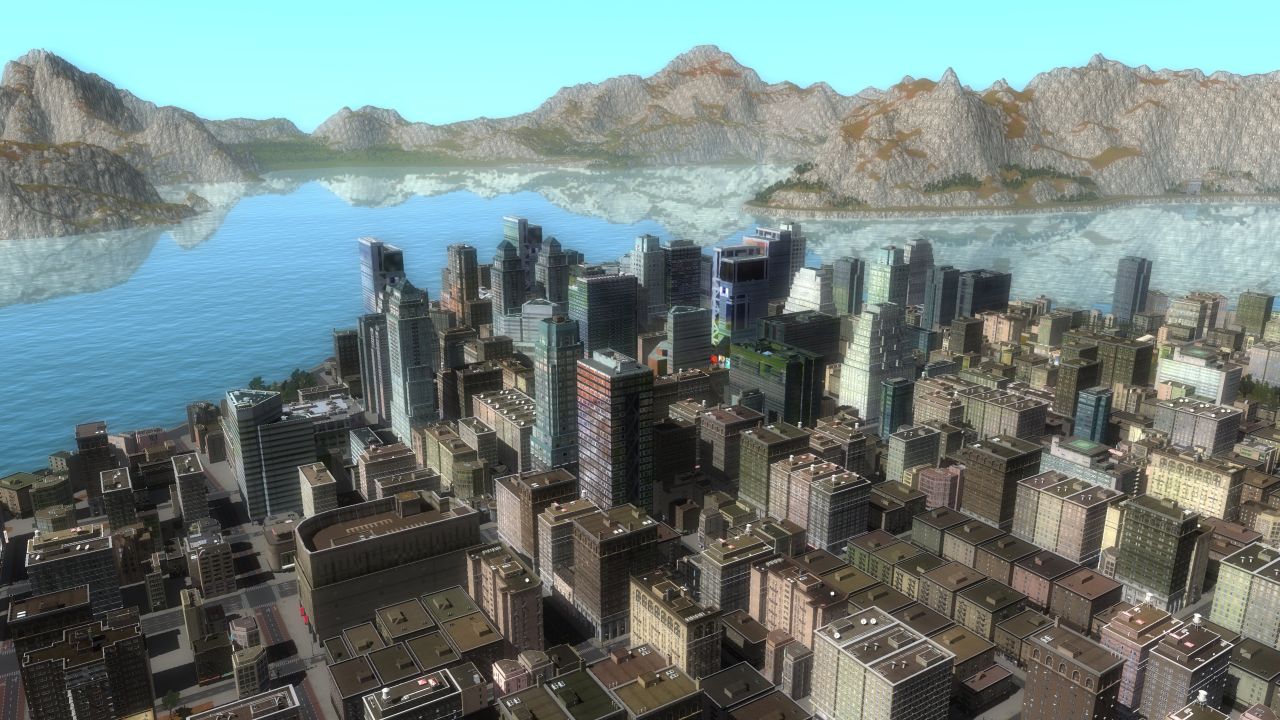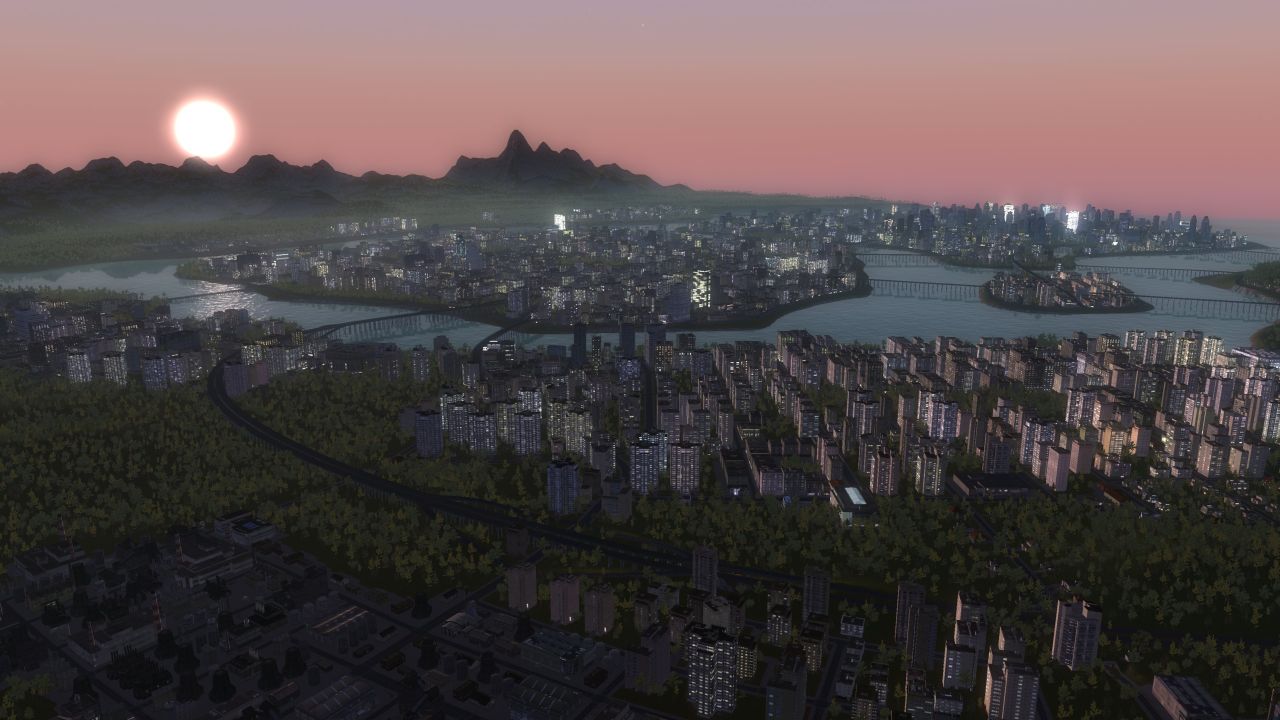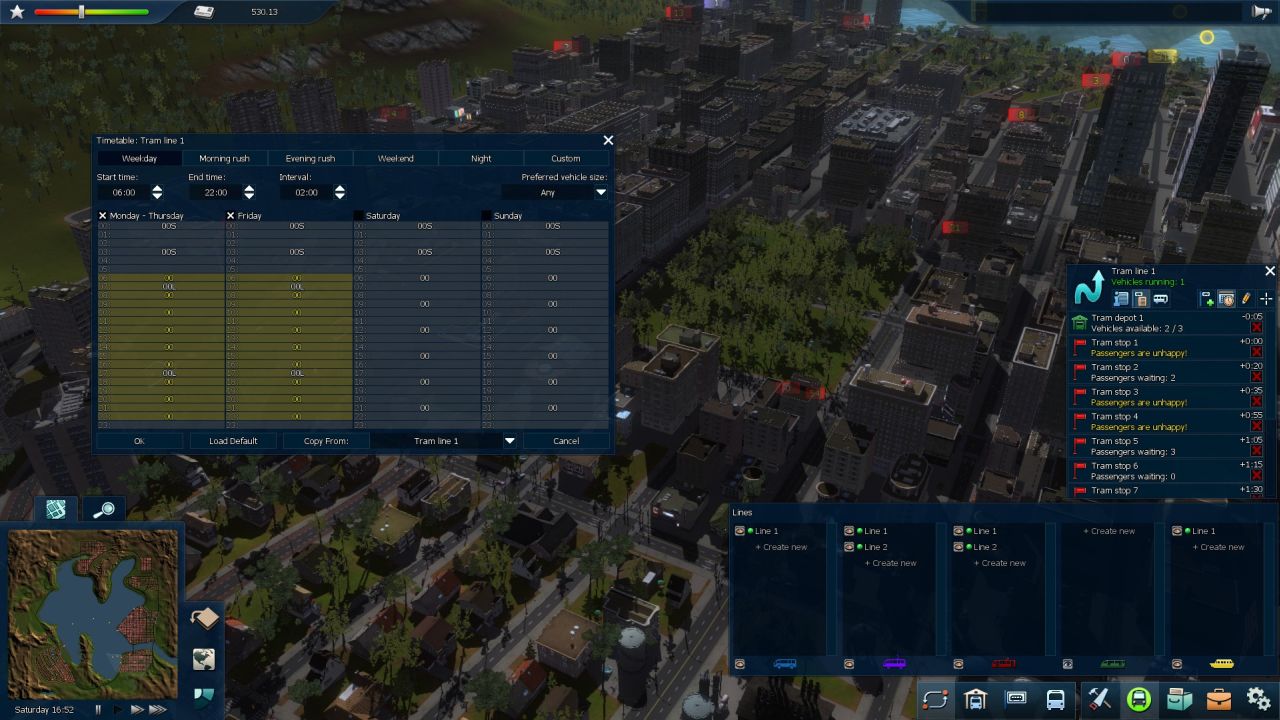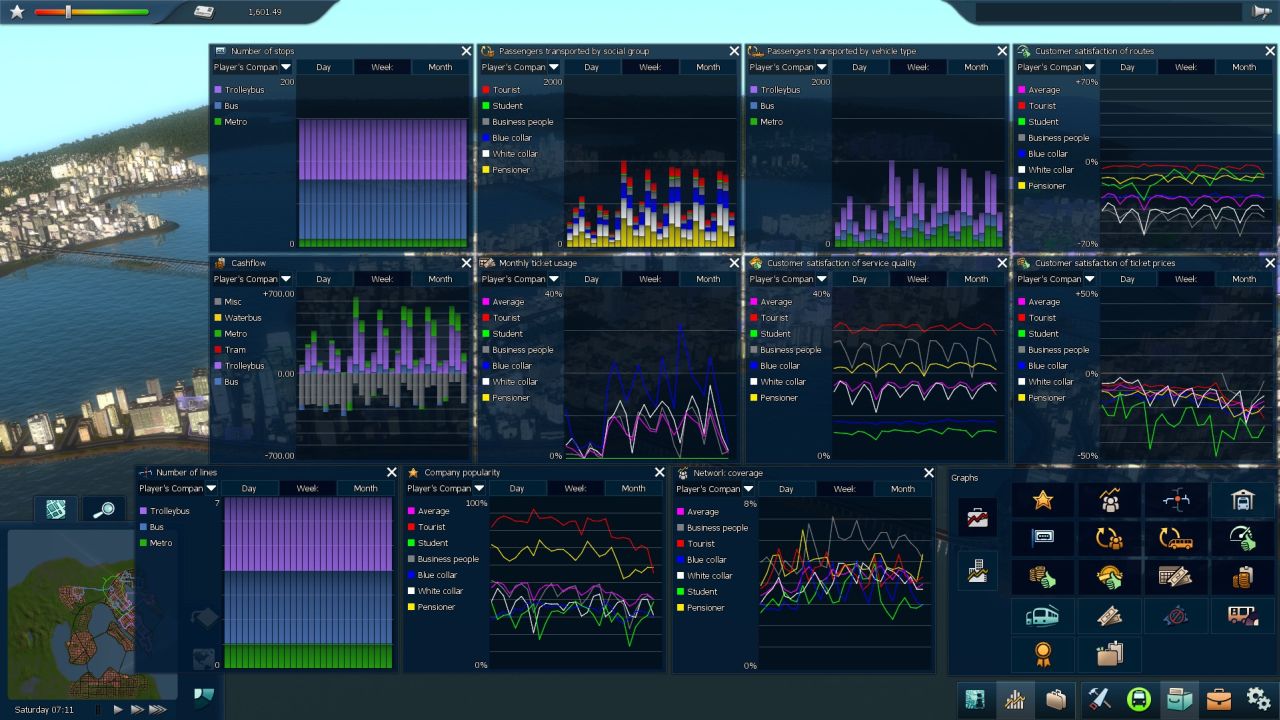Cities in Motion 2 Review
The fun of transporting virtual people from point A to point B is hampered by design and technical issues
The original Cities in Motion was a well-crafted simulation title that maybe lacked in a few areas but mostly managed to create a believable and enjoyable world where players could create their own city transportation empire. Sure it wasn’t perfect, but for a genre that only sees a game or two every few years, it was a solid effort. With a sequel arriving just two years later, it’s clear that fans enjoyed the game and wanted more. But does Cities in Motion 2 deliver? Sort of.

Just as before, Cities in Motion 2’s main appeal is letting players create a varied and expansive public transportation system within a city. That much remains the same, but the developers have attempted to address every criticism from the original game while also adding new game changing ideas – with varying results. The most notable addition right from the start is the maps and cities themselves; the game no longer uses real cities and instead opts to have unnamed metropolises. A disadvantage for those who enjoy seeing famous landmarks and accurate locations, but it doesn’t affect the gameplay much. Instead, players are now able to lay down new roads and actually expand these dynamically generated cities, and watch as the population grows and moves out to the newly created areas. It’s a nice mechanic that helps the cities feel more organic and evolving over time, thus presenting new transportation design challenges.
There are other cool updates as well, including a zoning system like you see in some modern urban sprawls. You can have up to four zones on the map by drawing them out with a brush, and of course there is a ticket pricing system that now accounts for how many zones a person has travelled and charges them extra accordingly. It’s still a chore to micromanage the ticket prices and wages that fluctuate with the economy though. Another annoyance in the original game was the traffic jams, which are now mostly gone, letting your transportation keep up and not get stuck for hours behind huge line-ups of cars. Cities do feel a little emptier as a result, but it’s a lesser evil. Further, the game’s logic allows parts of the city to actually be downgraded based on the service you provide due to their dynamic nature. So serving busses or trams downtown will actually make the game think it’s a suburb and the density of buildings will be reduced; similarly, building a metro in the suburbs can suddenly cause a surge in buildings and unrealistic business centers.

The game’s primary mechanics remain unchanged – you create transportation routes through the city, place stops, lay down tram tracks, and add vehicles to service the routes. You get to choose from busses, trolleys, trams, metro, and water buses to fit your transport design needs; each presenting unique design requirements and stop placements. However, notable design changes have been made that sound great in theory, but falter in execution. For example, all routes must now begin and end at depots. Sure it’s more realistic compared to ghostly spawning of busses in the original game, but provides an annoyance factor since the depot requires extra space to be placed and can’t be a customer pickup location. It also highlights a problem with the mechanical system design, as busses now have a terrible habit of losing their ability to drive with every passing minute. This means that a brand new bus literally cannot complete a route that’s only 8KM/5 miles without breaking down, and then must waste a lot of valuable time in the depot getting repaired.
Another design change is the addition of a working schedule system that goes along with the game’s new full day and night cycle. Players can create timetables for their routes much like in the real world by adjusting the frequency of service and paying attention to day of the week and rush hour. While this, once again, sounds fantastic in theory, the game’s actual results fall short of its ambition. You require quite a large number of vehicles per route to keep up with the schedule you’ve set, and because of the time speed the schedules are never actually realistic. So at best, you’re scheduling departure times from the depot, but have little control over where exactly your basses will be at a certain point of the day. So while rush hour busses set out on their suburban-to-downtown trip, by the time they return it could be the next day. There is also little in-game difference between weekend, rush hour, and evening traffic and passenger loads. Schedules are an attempt on realism that sadly never materializes due to the inherent mechanics.
As before, the game itself features a campaign and sandbox mode. However unlike the original title, the campaign feels very hastily put together with not much detail. Following a brief tutorial, the campaign is just a series of maps with a certain main objectives and some randomly generated ones. Making your company worth a fortune, providing coverage for most of the city, and connecting key hubs are some of the goals you’ll find here, not much different from the previous game. The problem is that while the original game featured fully developed infrastructures that slowly eased the player into the campaign and unlocked new transportation options with every mission, Cities in Motion 2 lacks such mission design. Campaign levels usually have no existing infrastructure, so there’s little value here over just playing in Sandbox mode and completing random objectives for fun. All of the transportation options are unlocked from the start and there’s no story to speak of; in other words, the campaign is rather disappointing with no sense of progression.
So the Sandbox mode is likely where players will spend most of their time in CiM 2. But even so, some of the maps are locked away from this mode until you’ve completed them in the campaign. Sandbox mode allows for some potentially endless gameplay thanks to the dynamic city growth and flexibility of the mode itself – but growth can be turned off should you wish to play in a static scenario. Also included is the map editor, which fans should be able to take good advantage of and create perhaps some of their favorite maps from the original game, or design real world metropolises.

Another hotly requested feature has also been added to the experience – multiplayer. Up to 6 players, either individually or in teams, can participate in competitive and cooperative modes. You play together or compete in order to provide the best transportation system for a city by offering the best routes and timetables for people to use. End goals include reaching a certain company value within a time limit, though it’s possible to play without one. Sadly, the online play has been bogged down by connectivity and lag issues, but at least the game functions the same as in campaign. Multiplayer has potential, but lack of players and connection problems currently prevent it from being worth your time.
While on the subject of technical issues, the game has a few. The user interface is not very friendly to use and the original game probably had a better version. Main menu is awkward to navigate and the cursor is often unresponsive to your clicks or when trying to deselect something. Every informational window you open stays open, so everything must be manually closed. Moving your mouse to the edges of the screen doesn’t scroll your view, and it must be done with a keyboard – an incredibly annoying mishap for a strategy game. Interface markers in the game world don’t scale and aren’t designed to be easily viewed. The best example is when creating your routes – placing stops, the location and service radius are easily visible at any zoom level and helps you design the best coverage. But when you go to the next step of actually creating your line by manually selecting each stop you’ve placed – the stops are now only identified as tiny markers that are impossible to see in the game world. They don’t change size based on how far you zoom nor have any highlights, so the only way to see them is to zoom all the way out so the markers are bigger than the buildings and other game objects.

Perhaps the only thing that the sequel does better than the original game is the presentation. While audio and music is still lacking, the game’s visuals are impressive. Being able to zoom in to any street corner and see your transit at work is satisfying. Placing down tracks and roads is also quite easy and the game does a good job of letting you design around the toughest terrain. The game runs well on the highest settings and the newly added night time mode looks good as well. Still no weather effects, however.
Cities in Motion 2 is a troubled sequel. It sets out to fulfil the wishes of fans and the initial design is there, but almost all the new features have one or two major complaints that prevent them from being fully realized. The full day cycle doesn’t combine well with the timetable system for any added realism, your vehicles break down too quickly, and there is still a bit too much micromanagement to be done. The multiplayer mode is also solidly designed in theory, but struggles with technical issues, as does the rest of the game. Cities in Motion 2 is a decent effort, but with every new feature comes a new set of problems. If you’re eager to see the new design ideas and ready to accept their shortcomings, it’s worth a look for simulation fans.
 Comments
Comments















